How many years has it been since I last felt the wind in the valley?
I was reminded of ‘Nausicaä of the Valley of the Wind.’
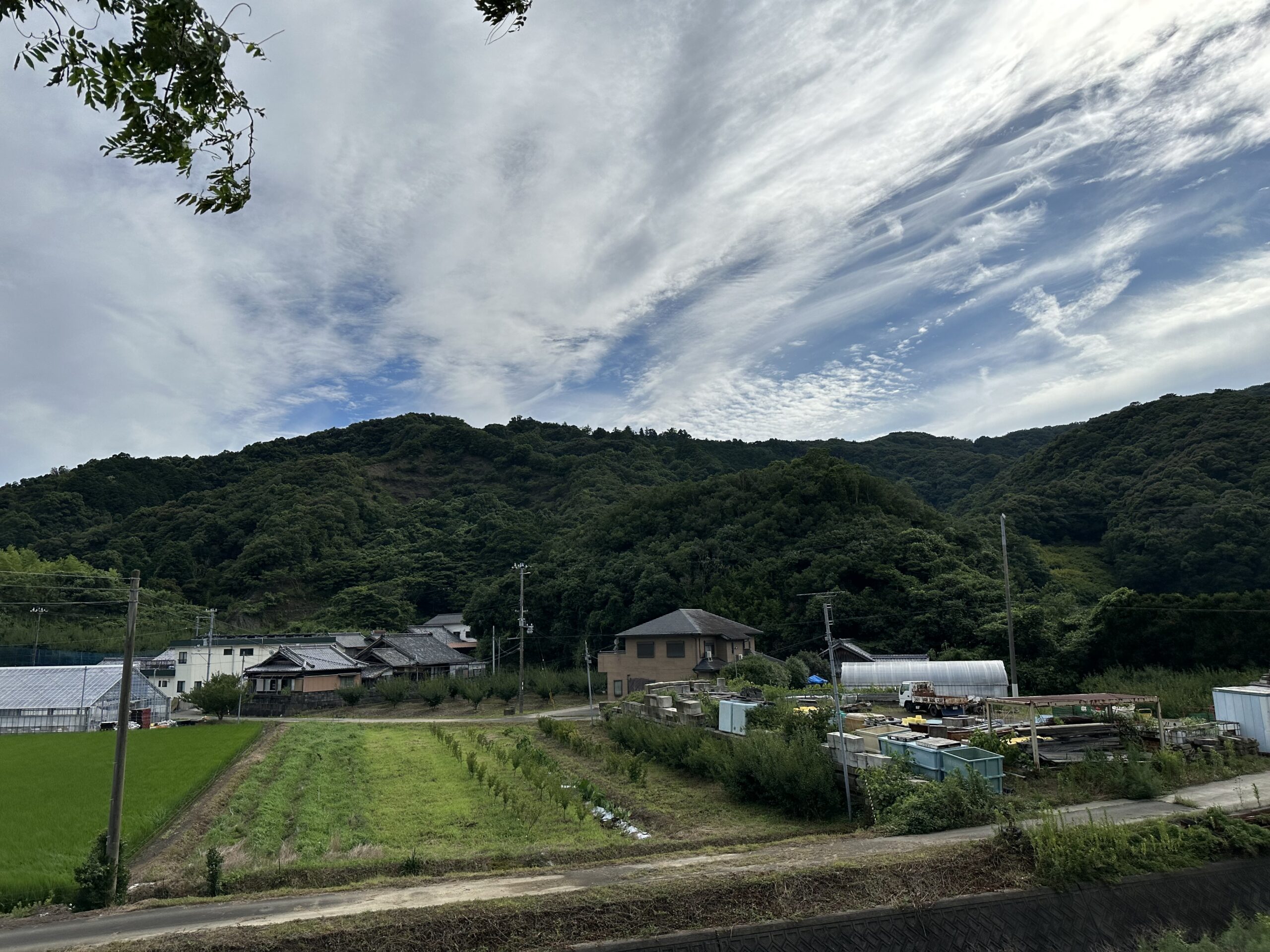
I visited Teragaki Farm in Minabe Town, Hidaka District, Wakayama Prefecture,
known as the Ume (plum) village.
Although we have had a connection for nearly 20 years, this was my first visit.
To the farm.
Climbing the mountain.
Of course, by car.
The completely pesticide-free and fertilizer-free plum trees
were standing tall and upright.
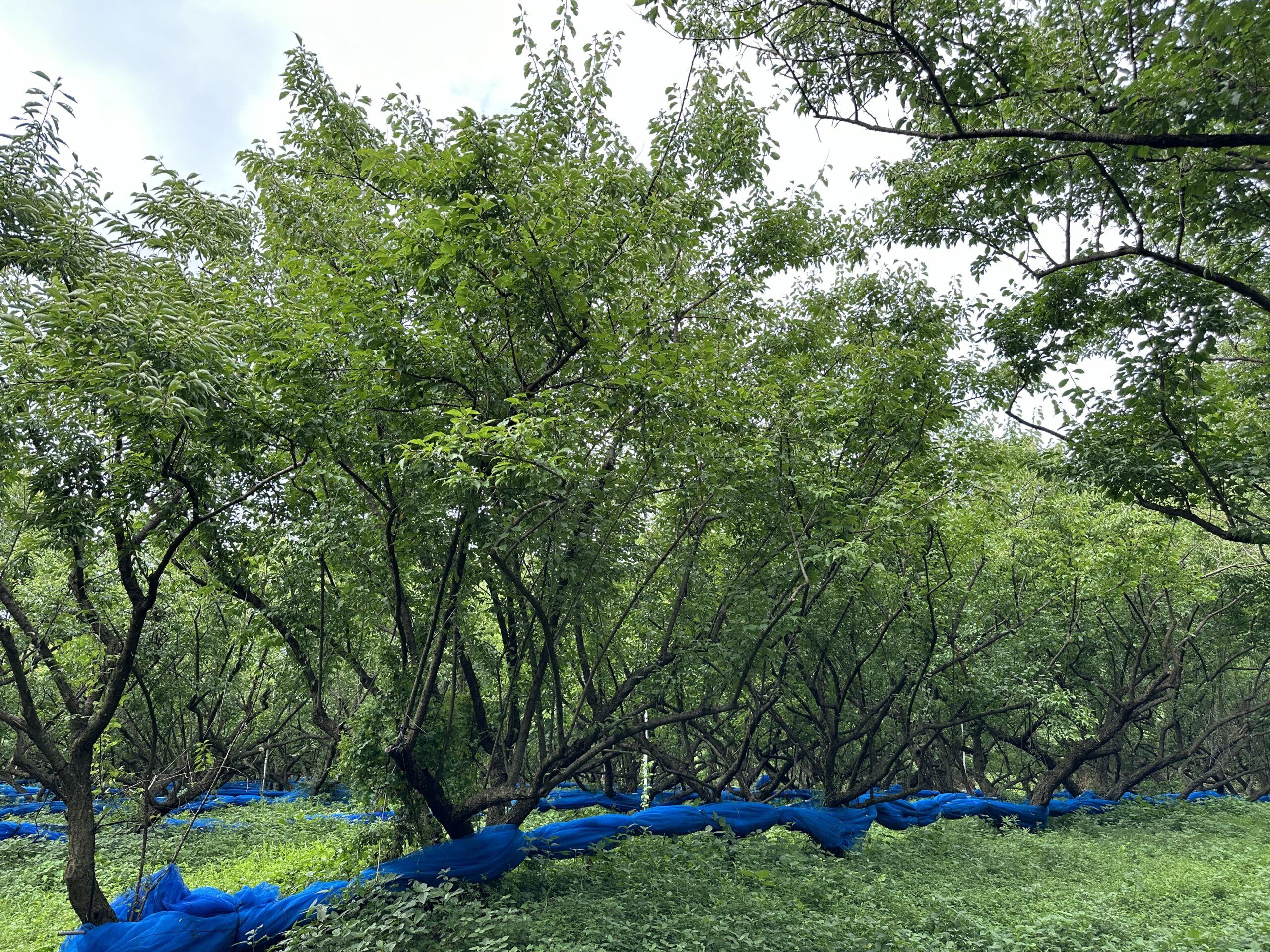
According to the materials prepared by Mr. Nobuo Teragaki:
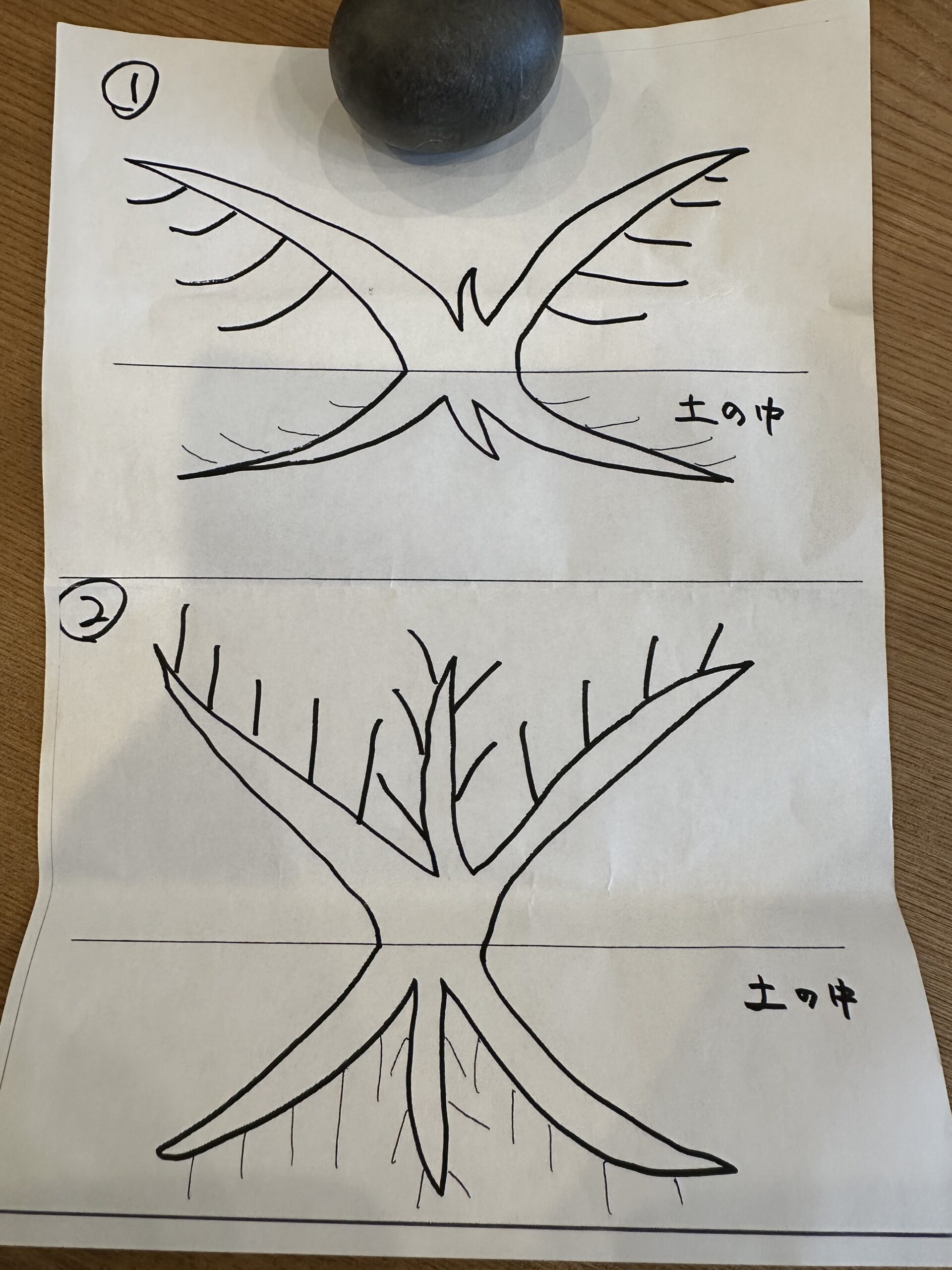
The trees are in state 2.
The above-ground appearance of the trees mirrors the underground structure.
State 1 is vulnerable to strong winds like typhoons.
The blue netting below and the leaves catch the plum fruits.
It seems that this year was a poor harvest.
The reason: “The timing of the bees’ pollination was off.”
When asked about next year,
Mr. Nobuo Teragaki confidently said,
“I think it will be fine.
There’s no data to suggest that a poor harvest one year will continue into the next.”
I thought it was remarkable.
To assert this in a business model that deals with nature,
one can understand the immense effort, setbacks, and perseverance behind it.
It’s the accumulation of this “data of tears” that enables such confidence.
The simpler the business model, the better.
The fewer the product lineup, the better.
This is a principle.
However, it is merely theoretical;
what turns theory into reality is the accumulation of “data of tears.”
In the book “Empathy Enterprises” (2010),
I wrote about Teragaki Farm as an “innovation that defies industry norms.”
According to Umeko-san, “That was the toughest time.”
It was around three years after they switched to completely
pesticide-free and fertilizer-free farming,
so there must have been a lot of trial and error
and uncertainty about whether it was the right approach.
After returning from the farm to the office,
there was a fun event organized by the staff.
One of the activities was an experiment with
“Ume no Kuroyaki” (charcoal-grilled plums).
The staff said,
“There’s a noticeable difference before and after drinking ‘Ume no Kuroyaki.'”
Two skeptical participants were called up to the front.
It was like a comedy variety show .
They tried moving their necks forward, left, right, and backward.
Then, with feet together, they bent forward to see how far they could reach.
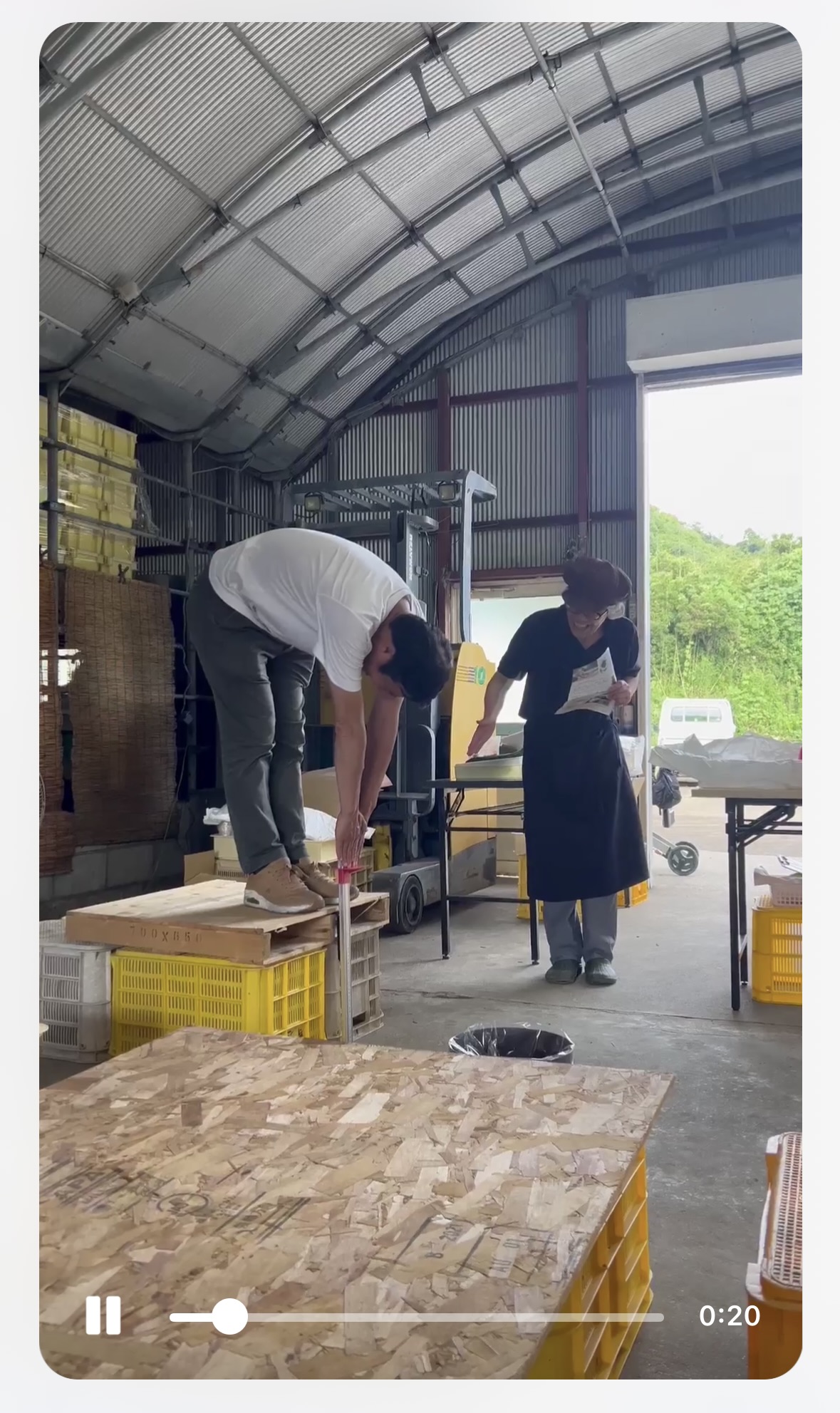
They drank the “Ume no Kuroyaki.”
The powdered “Ume no Kuroyaki” was delicious.

They moved their necks again: forward, left, right,
and backward.
Even watching from the side,
they looked like “new” people.
They also felt that they had indeed become more flexible.
Then, with feet together, they bent forward again.
They could stretch much further down.
They were the most surprised by the difference.
Another person tried it with the same result.
They could stretch much further down.
It was surprising.
I had tried Teragaki Farm’s “Ume no Kuroyaki” before but had not experienced such effects.
I don’t know the medical aspects, but it seems to improve circulation.
I also tried it. The sore throat I had since morning got better.
After returning home, I sprinkled it on tofu and ate it.
It must have improved my metabolism;
I woke up several times during the night to go to the bathroom.
As a result, when I woke up this morning, my fatigue was completely gone.
I received a brand book, “The Story of Teragaki Farm,” as a souvenir.
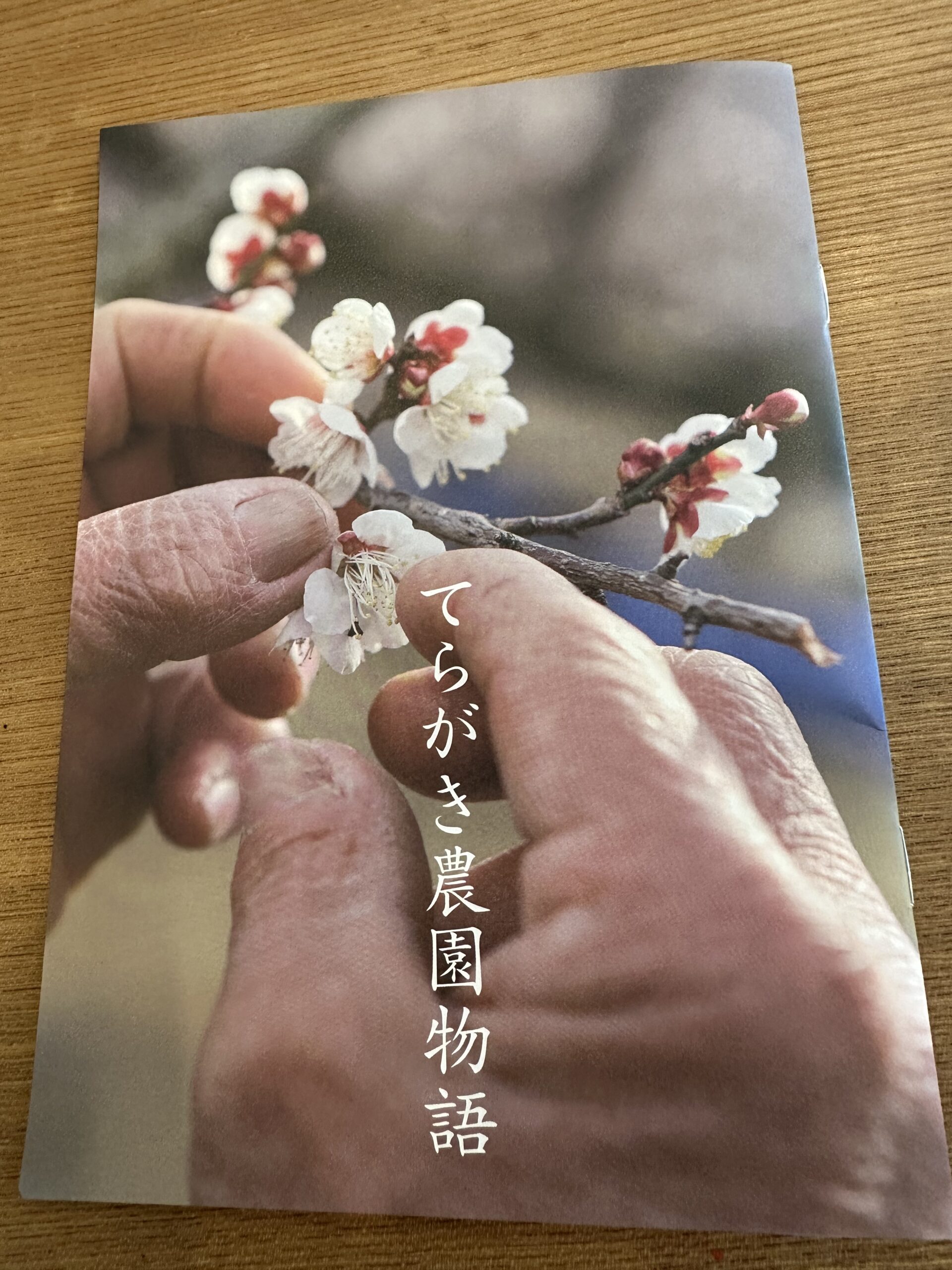
Chapter 1: “The Beginning of Teragaki Farm ~ Always Forward ~”
The story of founders Shozo Teragaki and his wife Katsuko’s start.
Katsuko is still healthy, and I had the chance to greet her.
Chapter 2: “The Challenge of Pesticide-Free Farming ~ Living Honestly as a Human-being ~”
Farm manager Nobuo Teragaki’s challenge.
The word “honesty” resonated with me.
It concludes with “Honest farming from now on too!”
Chapter 3: “The Resolve to Keep Making Umeboshi ~ Living with Plums ~”
Sales manager Umeko Teragaki.
I’ve known Umeko-san (whom I usually call Ume-chan) for a long time,
but I had never heard about the memorial service in Papua New Guinea.
At the memorial service in Papua New Guinea,
I repeatedly encountered elderly survivors offering umeboshi.
I asked them, “Why do you offer umeboshi?”
One elderly man explained,
“During the war, there were many times when we ran out of food and water
and couldn’t walk anymore.
But thinking about umeboshi would make my mouth water,
and I could take another step, then another. It gave me strength.”
He continued, “When I remember umeboshi,
I think of my hometown, my mother, my children, my family,
and I strongly wanted to meet them and return to Japan alive.
Thanks to umeboshi, I survived.”
Hearing this, I was deeply moved by the incredible power of umeboshi.
Through meeting these elderly men, I came to love umeboshi,
which I didn’t like as a child, and it became something truly precious to me.
“The Story of Teragaki Farm” is moving.
The book was created by an interview with the staff,
revealing the wonderful organizational culture of Teragaki Farm.
In fact, the two staff members who helped with yesterday’s event
seemed to truly enjoy their work and were filled with love for plums.
There’s no falsehood.
Yes, they are honest(正直).
Unlike typical brand books,
it was not polished and beautified by an external company.
It contains the “data of tears” from Teragaki Farm, which is why it brings such joy.
I was able to experience the greatness of an honest farm and an honest business.
Thank you very much!! ありがとう
#discoverjapan
#https://www.instagram.com/japan.hiddengem2024/
Follow our instagram

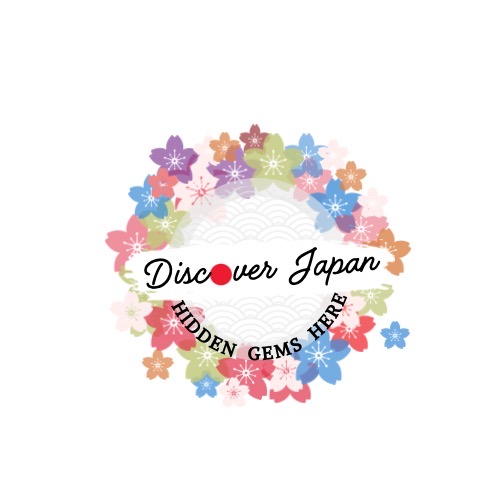

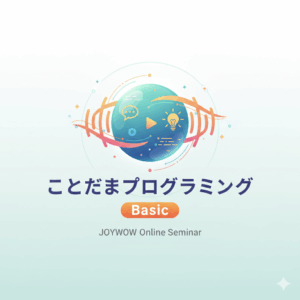






コメント